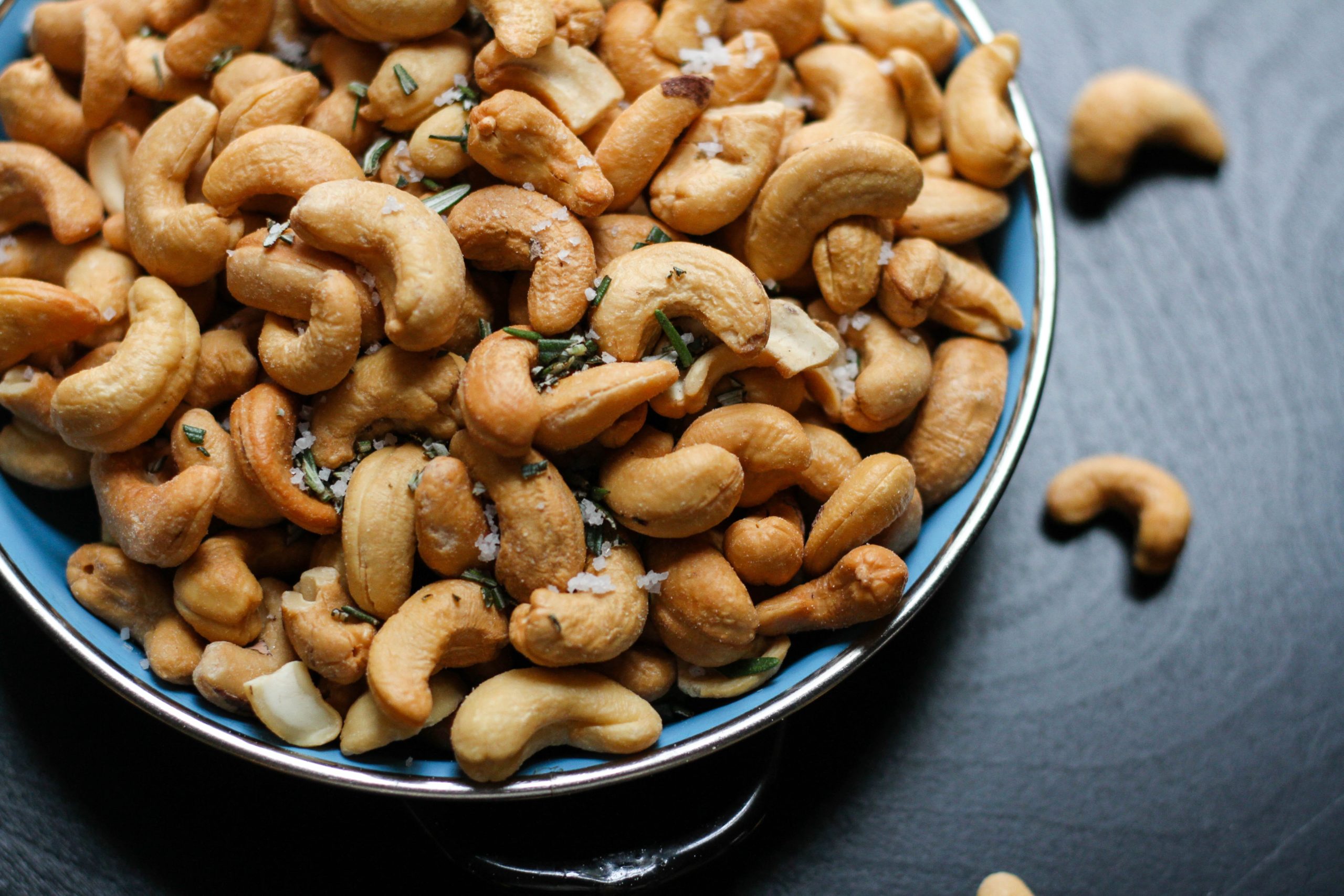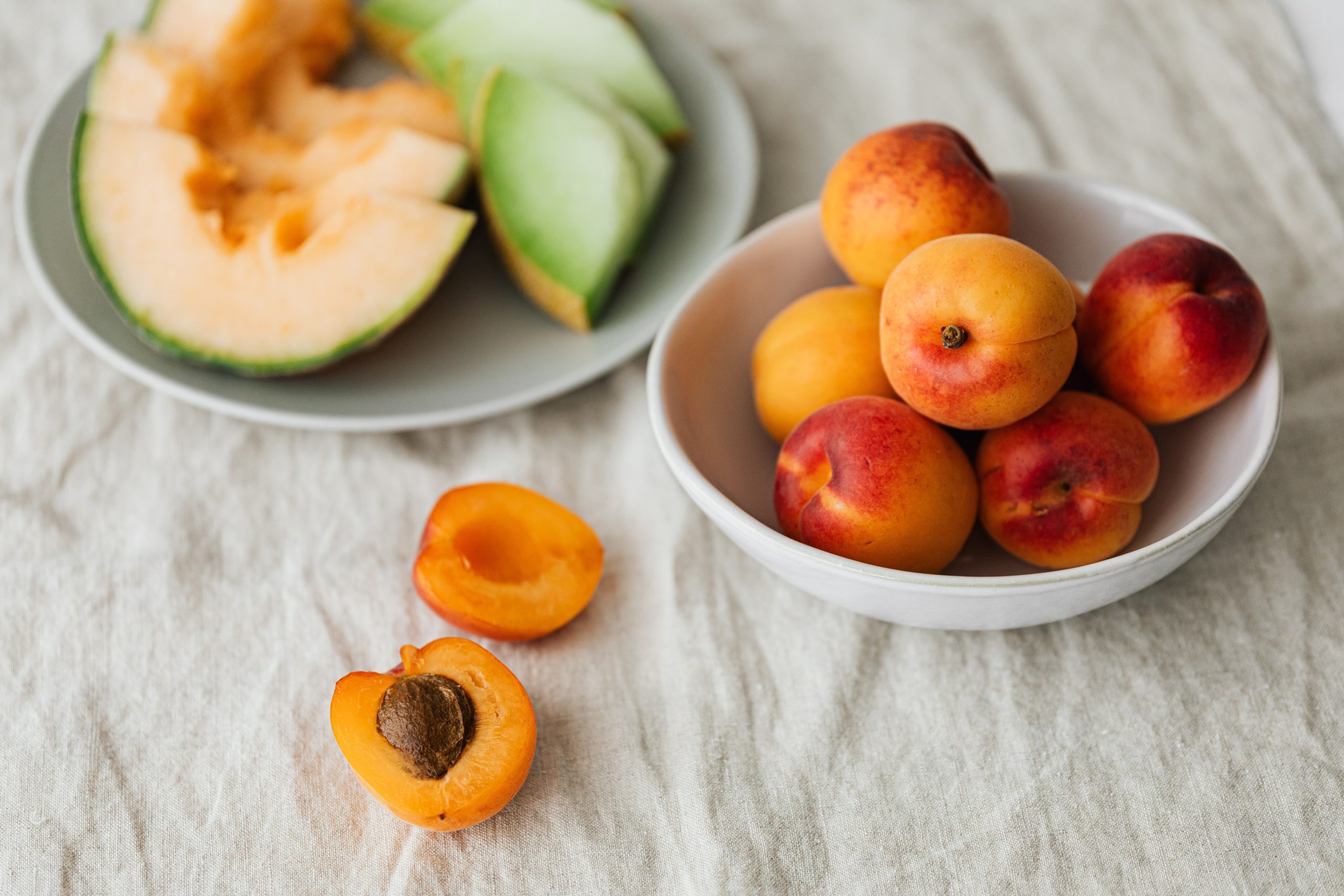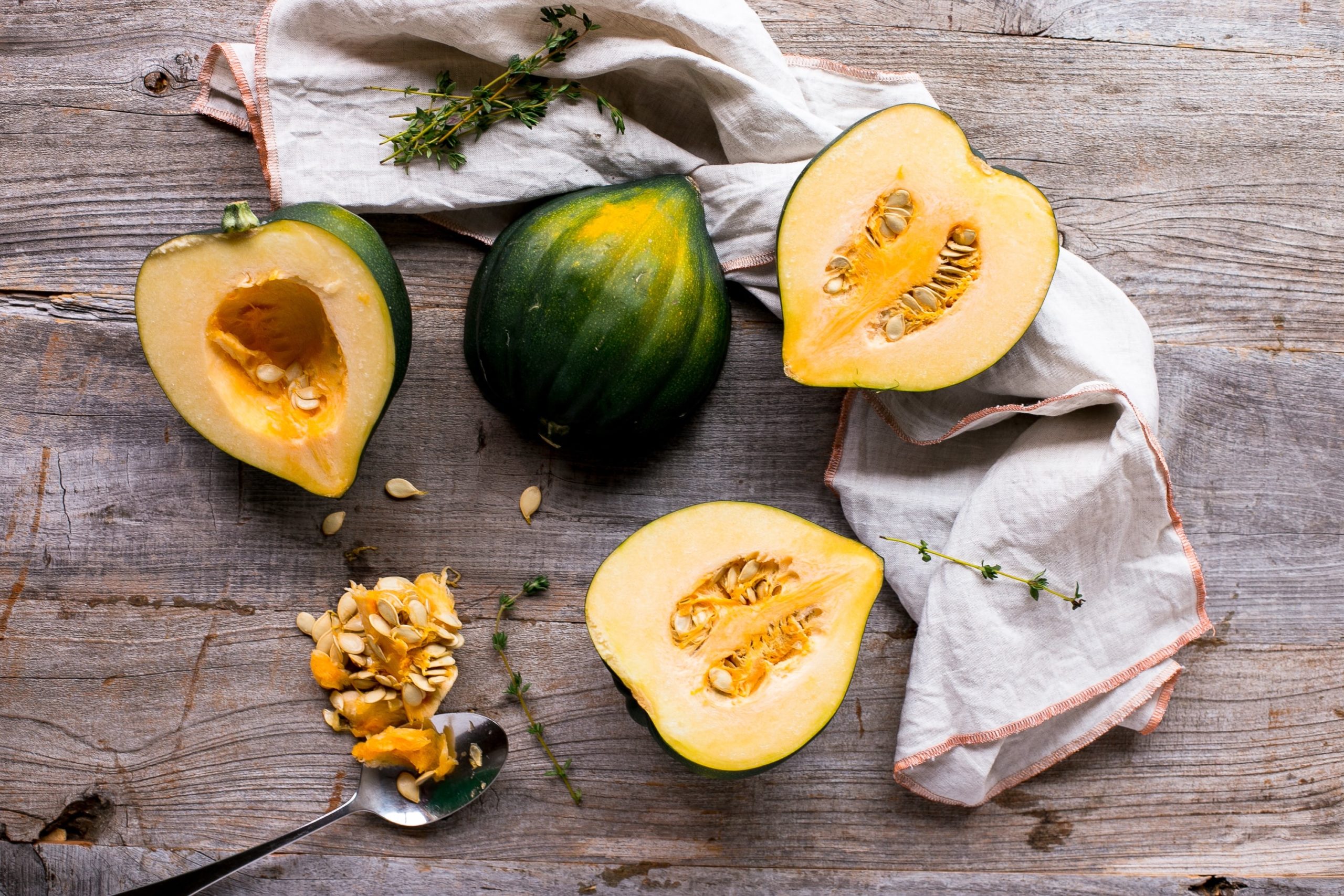Written by Kimberley Gittens, RD on behalf of Rachel McBryan, RD
Minerals are essential nutrients that your body needs to function properly. They play important roles in many bodily functions, including building strong bones, transmitting nerve signals, and regulating heart rhythm. A deficiency in any one of them can lead to serious health problems, which means it is important to consume a balanced diet that includes a variety of nutrient-dense foods to ensure that you are getting enough of these important nutrients.
You may be familiar with some of the common minerals such as calcium, iron and potassium. But, there are many more minerals which play an important role in health.
Phosphorous
Phosphorous is the second most plentiful mineral in your body, with the average adult having approximately 750 grams of the mineral stored in their body.
This mineral plays many important roles throughout the body. It is essential for moving enzymes around your body, producing energy, regulating your blood pH and controlling gene transcription. The majority of phosphorus in your body can be found in bones and teeth, while smaller amounts are found in cell membranes as well as in our DNA and RNA.
Health Canada recommends healthy people over the ages of 9 and 18 years old consume 1,250 milligrams of phosphorus each day, while adults over the age of 18 consume 700 milligrams daily. You can find a complete list of adequate intakes on Health Canada’s website. Including phosphorus-rich foods in your diet is a great way to ensure you meet recommended intakes.
Sources of Phosphorous
You can find phosphorous in a wide range of food products. Some phosphorus-rich foods include,
-
- Milk
- Atlantic salmon
- Mozerella cheese
- Lentils
- Cashews
- Potatoes
- Kidney beans
- Brown rice
- Whole wheat bread
- Tomatoes
- Yogurt
Phosphorous is also added to many foods to extend their shelf-life. You can find phosphorous additives in the ingredients list. These additives can account for 300 to 1,000 milligrams of our daily intakes of the mineral.

Calcium
You may have been told at on point or another in your life, that calcium is important to grow up strong and healthy. We know that it plays an important role in building strong bones and teeth, but calcium also plays many other important roles throughout your body. Your body uses calcium for,
-
- Blood clotting
- Sending nerve signals around your body
- Enzyme reactions
- Controlling your heart beat
Health Canada recommends healthy adults consume between 1,000 to 1,200 mg of calcium each day while children between the ages of 9 and 18 consume approximately 1,300 mg daily. You can find a complete list of recommended intakes on Health Canada’s website.
Support Your Health with a Registered Dietitian
Are you interested in learning more about how fat-soluble vitamins can benefit your health? Book a FREE discovery call with a registered dietitian today to learn more!
Sources of Calcium
Many foods in our diet are a good source of calcium, particularly dairy products and dark leafy greens. Some of the richest sources of calcium include:
-
- Plain yogurt
- Orange juice
- Mozzarella cheese
- Tofu
- Soy milk
- Pink salmon
- Breakfast cereals
- Chia seeds
- Broccoli
- Sardines
- Beans
- Kale

Potassium
Potassium is another mineral that plays an important role in sending nerve signals throughout your body. In fact, potassium sends signals telling your muscles (including your heart) contract. It also plays a role in maintaining normal blood pressure and reducing the risk of bone loss and kidney stones.
Sources of Potassium
According to Health Canada, women should aim for 2,600 mg of potassium per day, while men should aim for 3,400 mg. Including some potassium-rich foods in your diet can help meet your needs. Some great options include:
-
- Spinach
- Potato
- Lentils
- Apricots
- Kidney beans
- Tomatoes
- Bananas
- Sweet potato
For a detailed list of the amount of potassium you can find in these foods, check out Health Link BC’s potassium page.

Sodium
Sodium is a versatile micronutrient, that acts as both a mineral and an electrolyte. Like potassium, sodium plays a role in sending nerve signals throughout the body, contracting muscles and balancing the fluid in your body. It is also responsible for maintaining the pH balance of your body, and absorbing important nutrients like glucose and amino acids.
Most Canadians consume more sodium than they need. Health Canada recommends limiting your sodium intake to 1,500 to 2,300 mg per day.
Sources of Sodium
Unlike many micronutrients, sodium is not naturally found in many foods, but is added to many foods during cooking and processing to add flavour or increase shelf life. Some of the top food sources of sodium include,
-
- Pizza and tomato sauces
- Cured and deli meats
- Burritos and tacos
- Savoury snacks (such as pretzels, popcorn and chips)
- Cheeses
Although sodium is an essential mineral, consuming too much in your diet can increase your risk of high blood pressure, and heart disease.
Support Your Health with a Registered Dietitian
Are you interested in learning more about how fat-soluble vitamins can benefit your health? Book a FREE discovery call with a registered dietitian today to learn more!
Chloride
Chloride is considered one of the most essential electrolytes for our body, with many roles. This mineral is used for,
-
- Regulating the movement of compounds into and out of your cells
- Maintaining the fluid balance
Similar to other electrolytes, such as sodium, potassium and calcium, chloride plays an important role in muscle contraction and transmission of nerve signals throughout our bodies. This workhorse mineral also plays a role in digestion including the breakdown of foods and the activation of digestive enzymes.
Sources of Chloride
Although most of the chloride in the typical Western diet comes from sodium chloride (table salt), it is also nautrally found in many foods. All unprocessed foods, including meats and vegetables, contain small amounts of chloride.
Some of the best sources of this mineral include,
-
- Potatoes
- Bananas
- Cantaloupe
- Yogurt
- Acorn squash
- Orange juice
- Cheeses
- Canned fish
It’s important to keep in mind that Canadian diets typically include a large amount of salt. Unlike other micronutrients that are deficient in the typical Canadian diet, chloride and sodium are often found in excess of Health Canada’s recommendations. You can reduce the amount of chloride (and sodium) in our diet by looking for low-salt or no added salt alternatives.

Zinc
Zinc is an important part of proteins and enzymes that control gene expression. Without zinc, the body would not be able to produce the proteins that we require. Zinc is also important for controlling the release of hormones and is needed to send nerve signals as well as start other cell signalling pathways.
Sources of Zinc
There are many zinc-rich foods that you can add to your diet to boost your zinc intakes. Some of great sources of zinc include,
-
- Oysters
- Beef
- Alaskan king crab
- Pork chops
- Baked beans
- Breakfast cereal (some of cereals are forted with zinc)
- Pumpkin seeds
- Yogurt
- Cashews
If you are not meeting the recommended zinc intake, you can include more of these zinc-rich foods in your diet or explore supplementation options with your dietitian or doctor.
Selenium
Selenium is a micro-mineral, which means that your body only needs it in small amounts. It assists in reproduction and DNA synthesis. Selenium is also an important part of selenoprotein as well as some enzymes, which break down peroxides and help to protect your body from damage by oxidative damage and infections. Selenium is also used in the management of some conditions such as some cancers, heart, and thyroid disease.
There are two different forms of selenium, organic and inorganic. In this case, organic and inorganic refer to the chemical structure of selenium compounds. Your body absorbs both organic and inorganic forms of selenium, and can store excess amounts in your muscles until it is needed later on.
Support Your Health with a Registered Dietitian
Are you interested in learning more about how fat-soluble vitamins can benefit your health? Book a FREE discovery call with a registered dietitian today to learn more!
Sources of Selenium
Although small amounts of selenium are found in some drinking water supplies, it is not enough to meet you body’s needs. This means you still need to get some of the mineral from you diet.
There are many animal and plant-based sources of the mineral. When it comes to plant-based sources, the amount of selenium in the foods depends on the mineral found in the soil that the food is grown in. Essentially, if there is a low amount of selenium in the soil a plant is grown in, the plant will contain low amounts of the mineral.
Some selenium-rich sources of food you can include in your diet are:
-
- Brazil nuts
- Fish such as Yellowfin tuna and Halibut
- Ham
- Shrimp
- Chicken
- Cottage cheese
- Baked beans
- Oatmeal
- Lentils
- Spinach
- Peaches

Copper
Copper is another essential micro-mineral that the body needs to stay healthy! Your body uses copper to build essential enzymes that are used in the production of energy. Copper is also needed for absorbing and breaking down iron, as well as building connective tissue (such as tendons and ligaments), red blood cells, collagen and neurotransmitters.
Copper acts as an antioxidants, protecting your body from the harmful chemicals found in the environment. Check out “Antioxidants, simplified.” to learn more about antioxidants and how to include more of them in your diet.
Sources of Copper
You can find copper in both drinks and foods. However, the amount of copper found in tap water and over drinks can vary. As a result, foods in our diet are a more reliable source of the mineral. Some of the most copper-rich foods include,
-
- Oysters
-
Potatoes
-
Shiitake mushrooms
-
Cashews
-
Dungeness crab
-
Sunflower seeds
-
Millet
-
Atlantic salmon
-
Avocado

Take Away
Minerals support many essential functions throughout your body, from managing blood pressure to regulating your heart beat. Getting adequate amounts of mineral from your diet is key for supporting your health. Including a variety of foods in your diet can help ensure you’re meeting your nutrient needs.
Meet Your Nutritional Needs
Working with a Registered Dietitian will ensure that you’re meeting all of your nutrient needs with a plant-based diet. Book a FREE discovery call to get started!
References
Dietary Reference Intakes. (n.d.). Government of Canada. Retrieved February 23, 2022, from https://www.canada.ca/en/health-canada/services/food-nutrition/healthy-eating/dietary-reference-intakes/tables/reference-values-elements-dietary-reference-intakes-tables-2005.html
Higdon, J. (2014). Phosphorus | Linus Pauling Institute | Oregon State University. Linus Pauling Institute. https://lpi.oregonstate.edu/mic/minerals/phosphorus
Phosphorus. (n.d.). National Institutes of Health. Retrieved February 23, 2022, from https://ods.od.nih.gov/factsheets/Phosphorus-HealthProfessional/
Kimberley is a Registered Dietitian, licensed in Ontario. She helps clients across Ontario control their blood sugars and reduce their risk of chronic conditions.

